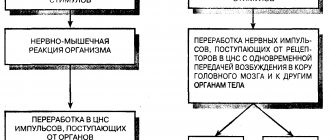Savant syndrome manifests itself with photographic memory and unusual abilities. From a medical point of view, this syndrome is not a disease; it is not described in ICD-10. However, savantism acts as a concomitant phenomenon in autism spectrum disorders and pathologies in the functioning of parts of the brain.
Most researchers agree that the phenomenon of savant syndrome is a genetic disease caused by a mutation on the Y chromosome, which is why there are more male savants than females.
Causes of Savant syndrome
Most often, the anomaly occurs due to genetic disorders and can be inherited. The disease usually affects people with autism or other mental disorders. The syndrome can also occur due to previous traumatic brain injuries or brain diseases. Many scientists believe that savantism is a consequence of perinatal pathology.
All the causes of the anomaly are still unknown, but experts estimate that the disease is five times more likely to affect men than women. This is explained by the fact that the male chromosome contains dozens of genes that contribute to the birth of a child with this disease.
Some doctors suggest that the anomaly develops due to a special virus that causes neurons to mutate. And magnetic resonance imaging and computed tomography studies show that in people with Savant syndrome, the right hemisphere is much better developed than the left. That is why they have special abilities.
It has also been confirmed that patients with the syndrome have a special brain structure: it is not divided into two hemispheres.
Savantism cannot appear due to diseases acquired during life.
Stages and degrees
Savant syndrome is a mental disorder that has a genetic predisposition. The disease develops rapidly against the background of mild mental retardation or autism. But the clear causes of this pathology are not fully known to science.
In isolated cases, the syndrome can develop as a result of severe traumatic brain injury or various infectious and inflammatory diseases of the brain.
Most often, the disease is accompanied by various forms of mental retardation - autism, epilepsy, Down syndrome. The sooner parents begin to correct the development and behavior of their child, the higher the likelihood that in the future he will be able to adapt normally to society.
The initial stage of savantism accompanies a person from the first days of his life. Developmental deviations are clearly visible from the age of 12. Modern technologies make it possible to detect pathology in infancy.
In 95% of all cases, the syndrome develops due to intrauterine pathology of the fetus. Most often, this mental disorder is diagnosed in men. Psychiatrists explain this by the fact that the testosterone produced has a suppressive effect on the development of the left hemisphere of the brain. In savantism this phenomenon is clearly expressed.
Scientists are conducting laboratory studies to determine to what extent the pathology affects the right hemisphere of the brain. Patients develop only 1 specific skill. For example, excellent memory, unique hearing, acute vision.
For a more thorough study of this disease, patients who acquired savantism as a result of illness or traumatic brain injury are of great value. It is difficult for such people to communicate with others.
In the presence of Savant syndrome, patients are withdrawn and have a certain mental dysfunction. With this deviation, a person is characterized by stereotyped movements and serious speech impairments. Patients avoid the touch of others and avoid direct eye contact.
Risk factors
Since in most cases savantism occurs due to a hereditary predisposition, the main risk factors are genetic disorders and mental disorders. These include: Asperger's syndrome, autism and mental retardation.
In addition, the following, no less significant, risk factors are identified:
- Prematurity (birth of a baby before 35 weeks);
- Baby weight not exceeding 2500 g;
- Mature age of at least one of the parents (mother - over 40 years old, father - over 49);
- Congenital malformations;
- Injuries received during childbirth;
- Postpartum resuscitation of the child;
- Recent infections and brain diseases;
- Male gender;
- Gene mutations due to unfavorable environmental conditions;
- Lack of vitamins, especially vitamin D.
Reasons for appearance
The results of highly specialized studies in the field of studying the functioning of the brain have shown that during savantism, the activity of the right hemisphere is significantly higher than that of the left hemisphere, which is why a specific functional deficit appears.
The development of the syndrome is influenced by the following factors:
- Having blood relatives with autism spectrum disorders.
- At the time of the child's conception, the mother was over 45 years old.
- Various congenital malformations.
- The birth of a child ahead of schedule.
- Poor ecology, which is why even in the womb the child experienced a lack of vitamin D.
- Immediately after the birth of the child, doctors were forced to carry out mandatory resuscitation measures.
- The weight of the newborn is significantly less than the norm.
Only 5% of all cases of Savant syndrome are diagnosed in women. Psychiatrists attribute this to the fact that the male body actively produces testosterone, which can suppress the synthesis of the hormone oxytocin, which affects the social adaptation of the individual.
There is a theory in the scientific community that the development of pathology is associated with viral diseases. Under the influence of unfavorable factors, the infectious agent enters the child’s body and, after entering the brain, provokes cell mutation.
Pathogenesis
The modern classification of diseases does not consider the syndrome as an independent disease. It is believed that the disease accompanies autistic disorder. The reason for the development of the anomaly still remains unknown.
There is an opinion that the disease occurs due to various pathological processes that can affect the asymmetry of the cerebral hemispheres. Typically, in healthy people, the right hemisphere, which is responsible for creativity, spatial and imaginative thinking, is smaller than the left hemisphere (analytical thinking and verbal information). Studies show that in patients the left hemisphere is damaged, which means the right hemisphere fully compensates for its dysfunction. Therefore, a person develops amazing abilities and talents.
Kinds
Savant syndrome is a rare mental disorder in which the patient has a well-developed specific ability. There are very few people with this diagnosis. If social adaptation is possible, they get interesting work and also inspire directors to shoot great films. A person's talent can manifest itself in different ways.
Experts distinguish several types of syndrome:
- A person may have a high ability to learn foreign languages at a high level. Often such people become real polyglots.
- From an early age, a person can show incredible ability for complex mathematical calculations. In just a few seconds he can recite the result of multi-digit multiplication.
- Artistic inclinations. A person can quickly create original masterpieces, detailing a previously seen plot to the smallest detail.
- Phenomenal memory. By looking just once at a diagram or photo, a person can depict what he saw with the highest accuracy.
- Modeling. People with savantism are excellent at making simple objects from scrap materials, and are also able to recreate the most complex small details.
- Mechanics. A person is able to determine the exact distance between two objects without using any measuring instruments.
The modern classification of diseases does not consider Savant syndrome as a separate pathology. Psychiatrists tend to assume that savantism is accompanied by a neurodevelopmental disorder. Science does not fully know the reason for the development of this mental disorder.
There is a known case in medicine when, after examining a patient’s brain using MRI, the absence of the corpus callosum, as well as other significant damage to the central nervous system, was revealed. Moreover, the man was blind from birth, had mental retardation, but played the piano brilliantly.
Symptoms of the disease
The symptoms of the disease are difficult to confuse with any other disease, since they are all specific. For example, savants are not able to independently take care of themselves in everyday life - they cannot eat or dress without help, it is difficult for them to go shopping or just talk to strangers. But with all this, such people are real geniuses in any field: they can completely retell a book they read yesterday, add up huge numbers in their heads in a matter of seconds, or accurately reproduce a musical composition they heard for the first time.
Unfortunately, the areas of knowledge of such people are limited. Patients have phenomenal memory, artistic, musical, linguistic, mathematical or mechanical talents, but they often do not know their name or birthday. Sometimes patients have several amazing abilities at once. Patients with the syndrome remember all the small details: they can even describe minute by minute the day that happened several weeks ago.
People with Savant syndrome live in their own fantasy world. Typically, patients are not communicative, it is difficult for them to construct a sentence and express their thoughts, so they cannot fully integrate into society. Patients have speech and movement disorders. They do not look into other people's eyes and are afraid of being touched.
Savantism is also accompanied by:
- Physical and mental retardation;
- Mental disorders;
- Autism;
- Down syndrome;
- Brain dysfunctions;
- “Islands of Genius.”
First signs
If the disease was congenital, then the person’s unusual abilities will begin to manifest themselves in childhood. For example, children who have just learned numbers can immediately add them in their minds without error.
Thus, at the age of 2, Kim Pik, who was suffering from savantism, could completely remember the text of a book that had just been read to him. Already at the age of 12, he graduated from school, as he completely mastered the program without anyone's help.
Stages
Usually the disease is accompanied by various forms of mental retardation - epilepsy, autism, Down syndrome. Each of them has the main similarity - the earlier the correction of the child’s behavior and development was started, the greater the chances of a person’s successful adaptation to society in the future. That is why the early stage of development of the anomaly is most important.
The initial stage accompanies the child from the first days of his birth. In such children, it is not difficult to notice developmental differences already at the age of 1-2 years. At the same time, mental disorders become more obvious. Modern diagnostic technologies make it possible to identify the syndrome in infancy.
Forms
The incredible abilities of patients usually manifest themselves in one type of activity:
- In music. Most often, patients play the piano, have absolute pitch and can accurately repeat all notes.
- In sculpture or painting. Savants don’t even need to be taught how to draw; they themselves know how to do it correctly. Their drawings and sculptures are particularly realistic and colorful.
- In modeling. Patients not only perfectly model simple objects, but are also able to produce complex small parts.
- In mathematics. Mental calculation of huge examples, repetition of a series of multi-digit numbers and other mathematical abilities - all this is also a distinctive feature of savants.
- In mechanics. Patients can determine the exact distance without any measuring instruments.
- In linguistics. This form is much less common than the others, but it also occurs. Some savants are true polyglots and speak several dozen languages perfectly at once.
- In time. People with Savant syndrome can accurately tell time without a chronometer or watch.
- They have a good memory. A representative of this form is Kim Peak, who can read an entire page of a book in 10 seconds. Today it is known that he read more than 10,000 books and can reproduce the text of each of them verbatim.
- Sometimes patients have a more developed sense of smell, vision and touch than the average person.
My recommendations
The main difficulty that parents of savant children face is teaching them self-care and communication skills. They do not perceive verbal instructions from adults. I recommend that parents of such children use alternative methods of communication: pictures, diagrams, sheets placed in prominent places with a graphic representation of the sequence of actions. The savant perceives visual images better than oral speech.
Psychocorrectional work with such children is focused on helping them with socialization. Such children need to be taught to live among people, come into contact with them, and carry out joint activities. A serious obstacle in this process is their poor development of the emotional-volitional sphere.
I noted that art therapeutic technologies fully correspond to the individual characteristics of children with this illness.
In addition to correcting the emotional-volitional sphere, I consider it necessary to develop the logical thinking of these people and expand their ideas about the world around them. Their heads contain multi-volume encyclopedic knowledge, which they absolutely do not know how to use. We need to help them apply their theoretical basis in life.
It is possible to achieve lasting positive dynamics in the psychocorrection of savantism only through long-term work together with a defectologist.
Famous people with the syndrome
Many patients with the syndrome are truly great and brilliant people. The most famous of them are:
- Stephen Wiltshirk is a talented painter from Britain, famous for his phenomenal memory. Little Steven was diagnosed with Savant syndrome at the age of 3. At the age of 5, his parents first noticed his special talent for painting. Now he can reproduce any landscape he has ever seen on canvas.
- Kim Peek was born with a cranial herniation, cerebellar injury and an enlarged head. Typically, such disorders lead to either giftedness or mental retardation. In Kim's case, it all happened at once. The child was also diagnosed at 3 years old. Over time, the teenager began to memorize entire books, and later he developed a real talent for music.
- Tammet Daniel was born with epilepsy and was developmentally delayed, but already at a young age he knew several dozen languages, and he could learn absolutely any dialect, even the most complex. In addition, Tammet also has mathematical abilities.
- Ben Underwood lost his eyes as a child, but this did not stop him from being excellent at navigating the terrain. To do this, he clicks his fingers to catch the echo.
- Derek Paravicini also has Savant syndrome, but despite the diagnosis he was able to become a famous jazz band musician.
Video: about the most famous savants
Nature of the pathology
The French term "savant" literally means genius. Each carrier of this diagnosis has outstanding abilities in various areas. Most patients with this diagnosis are widely known to the public as recognized geniuses of science and art. The uniqueness of Savant syndrome lies in the combination of seemingly incompatible factors.
Most people with pathology have difficulty using various household appliances for independent maintenance. However, each of them has unique abilities. Some of the “savants” are able to fully reproduce a musical composition after hearing it just once. Other patients easily retell the contents of books, completely preserving the author’s narration style. It is important to note that most healthy people do not have even a tenth of these abilities . Several centuries ago, people with such deviations were perceived as sorcerers with secret abilities.
The phenomenon of Savantism still cannot leave researchers indifferent, since many are interested in the question of how genius is combined with the inability to put on shoes or zip up a jacket on their own.
The phenomenon in question has not yet been fully studied. For many scientists, the mechanism of development of mental retardation in combination with genius, which are contained in one personality, remains an unsolvable mystery.
The phenomenon of savantism has a long history. The first cases of the development of pathology were recorded several centuries ago. Throughout the first half of the seventeenth century, "savants" were social outcasts who were forcibly sent to specialized institutions. The situation changed closer to the beginning of the eighteenth century, when the phenomenon in question caused a wide resonance in scientific circles.
The English scientist John Down, after whom one of the congenital pathologies was named, spoke of people as “savants” as people with dementia who have a unique opportunity to experience this world through the prism of personal perception. In order to develop this ability in patients, it is important to choose the right method of psychological and pedagogical education.
Savantism is a special form of pathological changes in the brain that have left an imprint on its functioning.
Diagnosis of the syndrome
The diagnosis can be made by the presence of brain dysfunction and by collecting the medical history of the patient and his relatives. The doctor must prescribe encephalography, CT and MRI studies, and collection of biomaterials for laboratory tests. It is imperative to conduct an IQ test to identify indicators of empathy. It is also necessary to carry out differential diagnosis to exclude other developmental anomalies. But most often, pathology becomes noticeable due to the combination of genius and talent together with mental disorders.
Treatment of the syndrome
Therapy for this syndrome is possible with a psychiatrist, but it is worth saying that there is no special treatment for the disease. The main thing is to adapt a person to normal life in society and improve his emotional and physical state. Treatment with medications is usually not used.
Each unique ability that was discovered in a child requires special treatment. Sometimes the actions of teachers lead to the loss of all abilities of children. This is why it is important to find a truly qualified specialist.
Corrective measures
First of all, patients should be adapted to life in society with other people, their emotional and psychological state should be improved. For this purpose, physiotherapy, developmental programs and rarely drug treatment are usually prescribed.
Art therapy, fairytale therapy, music classes, physical education and relaxing massage sessions are suitable for the socialization of children. Later, teenagers are introduced to social activities and improve their physical fitness. Classes on speech development are also conducted.
In addition to all this, the patient should lead a healthy lifestyle and give up bad habits. Usually, after such treatment, the symptoms of the disease recede, and the person begins to join a real, fulfilling life.
How does genius manifest itself?
"Savants" are endowed with unique abilities that lie in their memory. Features in the work of the brain are learning several dozen different languages at the same time, coping with complex mathematical problems and creating real works of art.
Most “savantists” easily cope with the study of various texts. Thanks to their phenomenal memory, they only need to familiarize themselves with the work once, quickly reading a few pages. After this, the “savant” can accurately retell what he read. Thanks to their developed hearing, people with this pathology only need to hear a complex musical composition once, after which they will be able to reproduce it completely again. However, most people with this pathology face various difficulties in analyzing and interpreting information that comes from the outside world.
Most savants have the ability to find solutions to complex math problems without the use of paper or a calculator. Such people easily speak many foreign languages and translate complex technical texts without difficulty. For patients, it is not difficult to create stunning pieces of art just by looking at their surroundings for a second.
There are historical cases in which a child with visual pathology, autism and Savant syndrome easily repeated complex musical compositions after hearing them just once. This boy's hearing, combined with his musical gift, made him world famous. Today, this boy is one of the most famous representatives of people with this syndrome.
The famous artist Stephen Wiltshire from England is another popular person with this pathology. Despite his low intellectual development, Stephen has the ability to reproduce in detail on paper various events and objects that he encounters in his life. Thanks to his phenomenal abilities, Stephen received the nickname “Camera Man.”
Many owners of the syndrome in question have the ability to distinguish between millions of different odors and break them down into individual components. Some patients easily analyze those around them, and based on this analysis they make a diagnosis of existing diseases. It should be noted that in this case, the ease with which complex pathologies are determined causes confusion among many representatives of medicine. Based on the above, we can conclude that “savantism” is a manifestation of genius, which is combined with mental retardation.
A person susceptible to Savantism may have outstanding abilities in one or simultaneously in several areas of knowledge
Forecast
Despite the fact that Savant syndrome was discovered quite a long time ago, scientists still could not decide what it is - a serious illness or a form of genius. Physical and mental retardation is usually replaced by some talents, which later help a person become famous and adapt to life in society. Many patients have a job they absolutely love and, most likely, are truly happy people.
Most Famous Savants
Let's take a look at the biography of the most famous “savants” and learn about their phenomenal capabilities:
- Kim Peek is the most famous “savant” born with a brain pathology. Kim's uniqueness lies in the fact that there was no separation between the hemispheres in his brain. Kim was diagnosed with mental problems at the age of three. During his life, this man read more than ten thousand different books and easily reproduced what he read from memory. In addition to his phenomenal memory, this man had incredible musical talent.
- Ben Underwood – Ben was diagnosed with retinoblastoma at an early age, which led to the need to have his optic organs removed. However, even after the operation, this man retained the ability to navigate in space, thanks to the use of echolocation.
- Tammet Daniel - this person has congenital epilepsy, which affected the degree of intellectual development. Daniel's unique feature is his ability to easily master different languages. Tammet only needs one week to fully learn a new language. In addition, this man is a real genius in the field of mathematics. According to Tammet himself, he perceives each mathematical formula as an object endowed with its own shape and color.
- Stephen Wiltshire is the “Camera Man” we mentioned earlier. Stephen began demonstrating his unique painting abilities at the age of five. Today this man is one of the most famous architects in the whole world.
- Temple Grandin is the only female savant on this list. Temple is known as a writer and holder of a doctorate in philosophy. This woman considers her life credo to be the establishment of a close relationship and understanding between people and animals.











